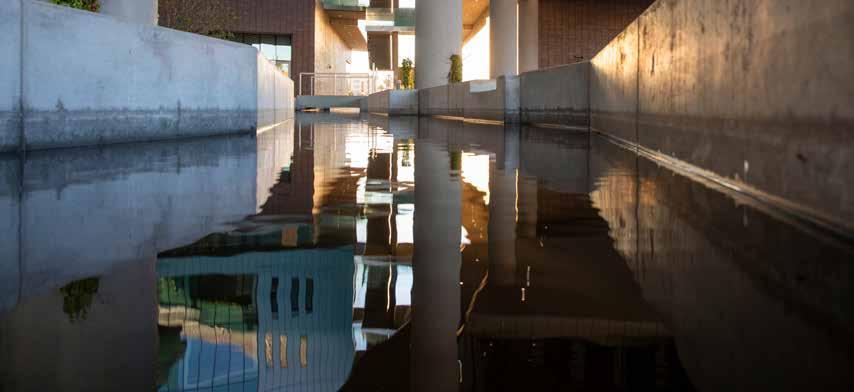
1 minute read
Optimized water
Optimizing ASU’s water use involves applying a systems approach to use the correct quantity and quality of water for the proper purpose at the right time. Clean water access is an increasingly critical global and southwest regional issue. ASU conducts education, engagement and research in the water domain and works to optimize water use in its operations.
Milestones:
• The Durham Hall renovation exemplifies the implementation of ASU’s Optimized Water goal. Despite doubling the landscaped area around the building, outdoor water use was reduced by 60% through a transition to native and adaptive plant species and the implementation of high-efficiency irrigation systems. The new landscaping also integrates bioswales to retain rainwater onsite and allow it to filter into the soil. The interior portion of the building demonstrates substantial water-use reductions, with a 33% reduction in water consumption from the integration of high-efficiency fixtures. The long-term water use is monitored through submeters to track indoor and outdoor water use.
• ASU Project Cities supported the city of Peoria with recommendations on the interconnection of sustainable water management and land-use planning.
• The Rob and Melani Walton Center for Planetary Health building represents a comprehensive implementation of ASU’s optimized water commitment. High-efficiency water fixtures minimize indoor water use. Using nonpotable water from the historic irrigation canal for landscape irrigation reduces the energy needed to treat and pump potable water. Condensate water also is directed to the courtyard landscaping instead of being disposed of in the sewer system.
ASU wastewater and on-campus students (FTE)
FY 2007 — FY 2022







